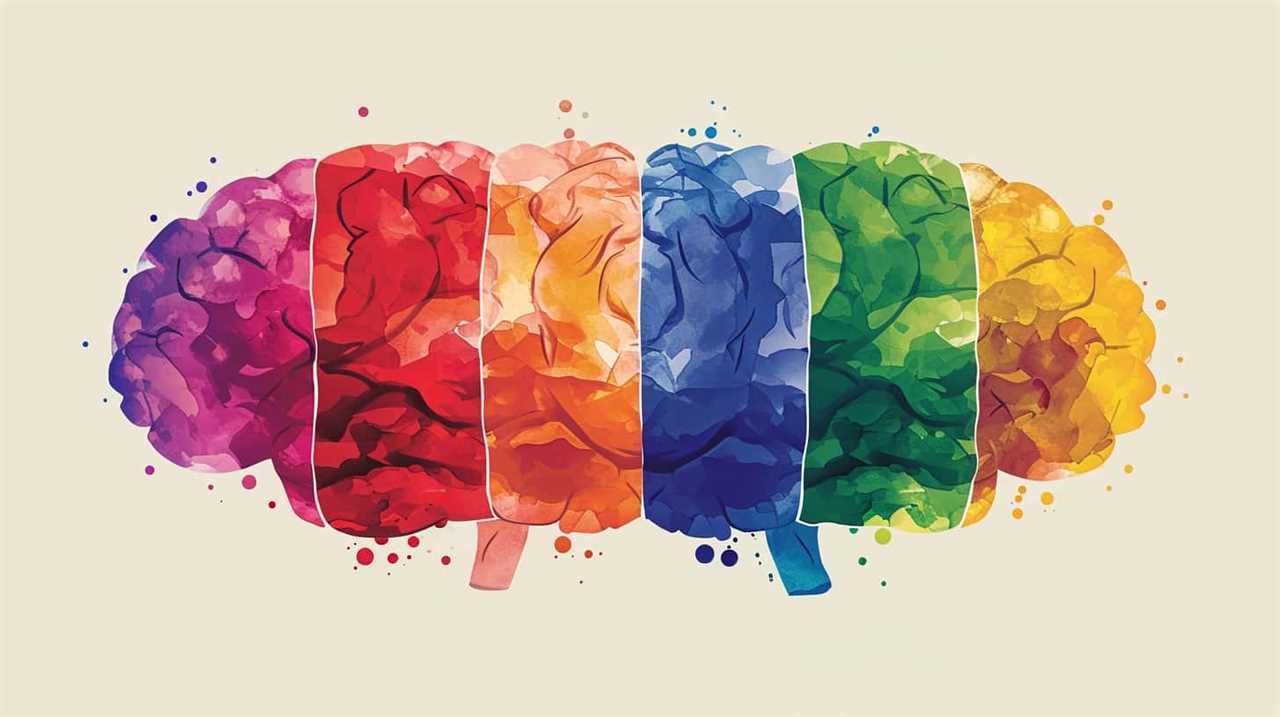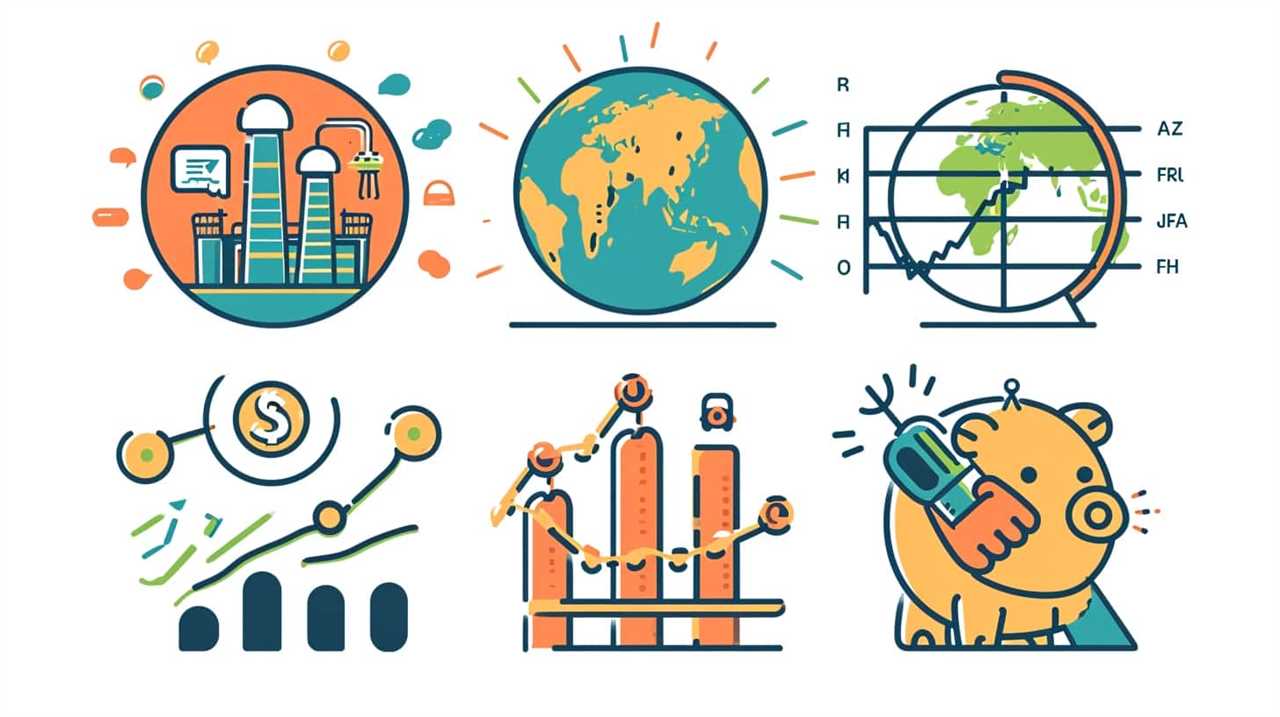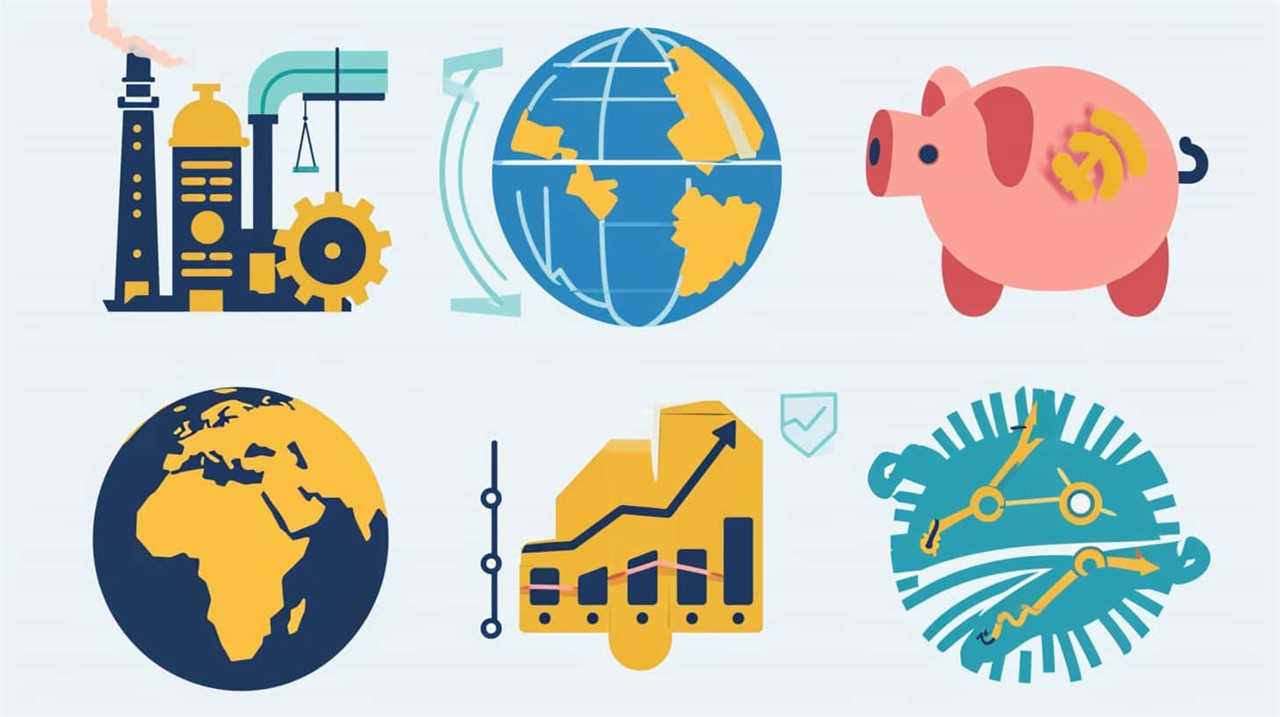Welcome to our guide on understanding Kahneman’s cognitive biases!
In this innovative how-to guide, we will explore the fascinating world of cognitive biases, as discovered by renowned psychologist Daniel Kahneman.
As a team of experts, we have compiled a comprehensive breakdown of these biases, providing you with the knowledge and tools to navigate them effectively.
From the anchoring bias to the overconfidence bias, we will delve into each bias, uncovering their impact on our decision-making processes.

By understanding these cognitive biases, you will gain a fresh perspective on how your mind works, enabling you to make more informed and innovative choices.
So, let’s embark on this enlightening journey together and unlock the secrets of Kahneman’s cognitive biases!
Key Takeaways
- Understanding cognitive biases is crucial for making informed and innovative choices.
- Anchoring bias heavily relies on the first piece of information and can lead to irrational judgments.
- Confirmation bias perpetuates stereotypes and hinders innovation, but overcoming it opens us to new ideas.
- Availability bias relies on readily available information and can lead to biased judgments, but awareness and seeking additional information can help mitigate it.
Overview of Kahneman’s Cognitive Biases
What are the key cognitive biases outlined by Kahneman?
Understanding cognitive biases is crucial in decision-making processes, particularly for those seeking innovation. Daniel Kahneman, a renowned psychologist and Nobel laureate, identified several cognitive biases that affect our judgment and decision-making abilities. These biases can significantly impact the quality of our choices and hinder our ability to think objectively.

One of the most well-known biases is the confirmation bias, which is our tendency to seek out information that confirms our pre-existing beliefs and ignore evidence that contradicts them. This bias can prevent us from considering alternative perspectives and hinder innovation.
Another important bias is the availability heuristic, where we rely on easily accessible information when making judgments or decisions. This can lead to overlooking important but less readily available information and can limit our ability to think creatively.
Understanding these cognitive biases has practical applications in decision-making. By being aware of these biases, we can actively work to mitigate their effects and make more informed and innovative choices. For example, we can consciously seek out diverse perspectives, challenge our own assumptions, and actively consider a range of possibilities before making a decision.
Anchoring Bias
We can explore the cognitive bias known as the anchoring bias, which influences our decision-making process. The anchoring bias occurs when we rely too heavily on the first piece of information we receive, and it then serves as a reference point for all subsequent decisions. This bias can have a significant impact on our judgment, leading us to make decisions that aren’t necessarily rational or objective.

To understand the effects of anchoring bias on decision making, let’s take a look at a real-life example. Imagine you’re shopping for a new laptop. The first store you visit has a high-end laptop priced at $2,000. This initial price sets a reference point in your mind. When you visit another store and see a laptop priced at $1,500, you may perceive it as a bargain, even though it may not necessarily be the best value for your money.
Another real-life application of anchoring bias can be seen in negotiations. The first offer made in a negotiation often serves as an anchor, influencing the rest of the negotiation. If the initial offer is unreasonably high or low, it can shift the entire bargaining range in favor of the party who made the anchor.
Confirmation Bias
Continuing our exploration of cognitive biases, let’s delve into the next subtopic: confirmation bias. This bias refers to our tendency to seek out and interpret information in a way that confirms our preexisting beliefs or hypotheses. It can often lead to a lack of objectivity and an unwillingness to consider alternative viewpoints.
- Selective Exposure: We’re more likely to expose ourselves to information that aligns with our existing beliefs, while avoiding information that challenges them. This reinforces our confirmation bias and can create an echo chamber effect.
- Cognitive Dissonance: Confirmation bias can also lead to cognitive dissonance, which is the discomfort we feel when we hold conflicting beliefs or when new information challenges our existing beliefs. To reduce this discomfort, we tend to ignore or dismiss contradictory information.
- Reinforcing Stereotypes: Confirmation bias can perpetuate stereotypes by causing us to selectively remember and interpret information that supports these stereotypes, while ignoring evidence to the contrary. This can hinder progress and innovation by limiting our ability to see beyond the confines of preconceived notions.
Understanding confirmation bias and its impact is essential for fostering innovation. By actively seeking out diverse perspectives and challenging our own beliefs, we can overcome this bias and open ourselves up to new ideas and possibilities.

Availability Bias
Moving forward, it’s important to address the impact of availability bias on our decision-making. Availability bias refers to our tendency to rely on readily available information when making judgments or decisions, rather than considering all relevant information. This bias can have a significant impact on the quality of our decisions, as it can lead to inaccurate assessments and flawed reasoning.
The impact of availability bias is particularly evident when we encounter vivid or memorable information that easily comes to mind. Such information tends to have a disproportionate influence on our decision-making, even if it isn’t representative of the overall reality. This can lead to biased judgments and suboptimal choices.
To overcome availability bias, it’s essential to be aware of its presence and actively seek out additional information. By consciously considering a wider range of perspectives and data, we can minimize the influence of availability bias on our decision-making. Additionally, employing systematic decision-making processes, such as gathering data from multiple sources and considering alternative viewpoints, can help mitigate the impact of availability bias.
In the subsequent section about the ‘framing effect,’ we’ll explore another cognitive bias that plays a crucial role in shaping our decision-making processes.

Framing Effect
To explore the cognitive bias known as the framing effect, we’ll delve into its impact on our decision-making processes. The framing effect refers to the psychological influence that the presentation or framing of information can have on our perception and subsequent decisions.
Here are three key aspects of the framing effect:
- Decision making: The way information is presented can greatly influence the decisions we make. Whether it’s through emphasizing potential gains or losses, the framing effect can sway our choices. For example, if a product is presented as having a 90% success rate, we’re more likely to perceive it positively and make a purchase.
- Cognitive biases: The framing effect is just one of several cognitive biases that affect our decision making. Understanding these biases, including the framing effect, can help us become aware of our own thought processes and make more informed choices.
- Marketing strategies: The framing effect is widely recognized in the field of marketing. Companies often use different frames to present their products or services in a way that appeals to their target audience. By understanding the framing effect, marketers can tailor their communication strategies to maximize their impact.
Sunk Cost Fallacy
The sunk cost fallacy is a cognitive bias that occurs when individuals make decisions based on the emotional attachment they’ve developed towards their previous investments, rather than rational decision-making.
It’s important to distinguish between rational decision-making, which focuses on future outcomes, and the sunk costs, which are past investments that can’t be recovered.

Emotional Attachment to Investment
One common cognitive bias that we often fall victim to is our emotional attachment to investments, known as the sunk cost fallacy. This bias occurs when we continue to invest time, money, or resources into something, solely because we’ve already invested a significant amount in it, even if it no longer makes logical sense.
Understanding and overcoming this bias is essential for effective decision-making in the world of investing. Here are three key points to consider:
- Awareness of emotional decision making: Recognize that emotions can cloud our judgment and lead us to make irrational decisions. By acknowledging the influence of emotions on our investment choices, we can strive to make more objective decisions.
- Focus on future prospects: Instead of dwelling on past investments, evaluate the current and future potential of the investment. Consider factors such as market trends, competition, and profitability to determine the best course of action.
- Cut your losses when necessary: Don’t let emotional attachment prevent you from cutting your losses. If an investment isn’t performing well and there are better opportunities available, it may be wise to exit and redirect your resources elsewhere.
Rational Decision-Making Vs. Sunk Costs
How can we avoid falling victim to the sunk cost fallacy and make rational decisions? When it comes to decision-making biases, the sunk cost fallacy is a common pitfall that can hinder us from making rational choices. The sunk cost fallacy occurs when we continue investing time, money, or resources into a failing endeavor simply because we have already invested a significant amount. To overcome this bias, we need to focus on the future outcomes and disregard the past investments. A helpful tool to guide our decision-making process is a rational decision-making framework. By analyzing the potential costs and benefits, considering alternative options, and being aware of our biases, we can make more rational choices. To illustrate this, let’s take a look at the following table:
| Decision Options | Potential Benefits | Potential Costs |
|---|---|---|
| Continue | Potential success | Additional expenses |
| Abandon | Time and resources saved | Feeling of loss |
Loss Aversion
Loss aversion refers to our tendency to strongly prefer avoiding losses over acquiring gains. This cognitive bias can affect our decision-making process by causing us to be risk-averse and overly cautious.

The fear of losing can lead us to make irrational choices and miss out on potential opportunities for growth and success.
Fear of Losing
When it comes to our decision-making process, we often find ourselves gripped by the fear of losing something valuable. This fear of losing, also known as loss aversion, can significantly impact our risk assessment and ultimately influence the choices we make.
Here are three ways in which fear of losing affects our decision-making:
- Overestimating the probability of failure: When we’re afraid of losing, we tend to overestimate the likelihood of failure. This skewed perception can lead us to avoid taking risks altogether, even when the potential gains outweigh the potential losses.
- Emotional bias: Fear of losing can cloud our judgment and lead to emotional decision-making. We may become more willing to make irrational choices to avoid the pain of loss, even if it means missing out on opportunities for growth and innovation.
- Anchoring on past losses: Our fear of losing can be reinforced by past negative experiences. We may anchor our decisions on these losses, which can prevent us from taking calculated risks and exploring new possibilities.
Understanding how fear of losing influences our decision-making can help us overcome its limitations and make more informed choices. By acknowledging and managing this cognitive bias, we can embrace calculated risks and unlock new opportunities for innovation and growth.

Risk Aversion Tendencies
As we navigate our decision-making process, one cognitive bias that significantly influences our choices is our tendency towards risk aversion, also known as loss aversion. Risk aversion refers to the preference for avoiding losses rather than seeking gains. This bias can have a profound impact on our decision-making, particularly in the context of investing.
When it comes to risk aversion in investing, individuals often choose safer investment options with lower potential returns, rather than taking on higher-risk investments that offer the possibility of greater rewards. This behavior stems from our natural inclination to avoid losses and the accompanying negative emotions. However, this risk aversion can sometimes hinder our ability to achieve optimal outcomes.
The table below illustrates the potential outcomes of risk aversion in decision-making:
| Scenario | Potential Gain | Potential Loss |
|---|---|---|
| Risk-averse decision | Modest gains | Avoiding significant losses |
| Risk-seeking decision | High potential gains | Potential significant losses |
| Balanced decision | Moderate gains | Moderate losses |
Understanding our risk aversion tendencies can help us make more informed decisions and strike a balance between seeking gains and avoiding losses. By being aware of this bias, we can take steps to mitigate its effects and make choices that align with our long-term goals.

Halo Effect
Through our cognitive biases, we tend to form positive or negative impressions of individuals or objects based on a single prominent trait, known as the Halo Effect. This bias can have unintended consequences and hinder our ability to make accurate evaluations.
To navigate the Halo Effect, consider the following:
- Awareness: Recognize when the Halo Effect may be influencing your judgment. Be mindful of your tendency to attribute other positive or negative qualities to someone or something based on a single characteristic.
- Diverse evaluation methods: Instead of relying solely on a single trait, use a variety of evaluation methods to gather a more comprehensive understanding. Consider gathering feedback from multiple sources, conducting thorough research, or employing objective assessments.
- Critical thinking: Challenge your initial impressions and analyze the situation or person objectively. Seek out alternative viewpoints and gather additional information to create a more balanced evaluation.
Gambler’s Fallacy
We often fall victim to the Gambler’s Fallacy, a cognitive bias that leads us to believe that past outcomes will influence future probabilities. This fallacy is rooted in our tendency to see patterns where none exist and to assign meaning to random events. When it comes to gambling or making decisions based on probability, the Gambler’s Fallacy can lead us astray.
The Gambler’s Fallacy occurs when we believe that the likelihood of a certain outcome increases or decreases based on previous outcomes. For example, if we flip a coin and it lands on heads five times in a row, we might mistakenly believe that the next flip is more likely to result in tails. This is a fallacy because each coin flip is an independent event and has no bearing on future outcomes.

Understanding the Gambler’s Fallacy is essential for avoiding probability illusions and making informed decisions. Recognizing that past outcomes don’t affect future probabilities allows us to approach gambling, investing, or any decision involving probability with a clear and rational mindset. By understanding the true nature of probability, we can avoid costly mistakes and make more accurate predictions.
Overconfidence Bias
The next cognitive bias we’ll explore is the tendency for individuals to have an inflated sense of confidence, known as the overconfidence bias. This bias leads us to overestimate our abilities and the accuracy of our judgments, which can have a significant impact on decision making.
Here are three key points to consider when it comes to overcoming overconfidence and understanding its impact:
- Self-awareness: Recognizing and acknowledging our own overconfidence is the first step towards overcoming it. We need to actively question our assumptions, seek feedback from others, and constantly evaluate the validity of our beliefs. By being aware of our tendency to be overconfident, we can make more informed decisions and avoid costly mistakes.
- Embrace uncertainty: Overconfidence often arises from a desire for certainty. However, in a rapidly changing and complex world, certainty is often elusive. Embracing uncertainty and being comfortable with ambiguity can help us make more realistic assessments of our abilities and reduce the likelihood of overconfidence bias creeping into our decision making.
- Diversify perspectives: Overconfidence can be mitigated by seeking out diverse perspectives and opinions. By actively seeking input from others with different backgrounds and expertise, we can gain a more comprehensive understanding of a situation and challenge our own biases. This can lead to better decision making and help counteract the impact of overconfidence.
Frequently Asked Questions
What Are Some Real-Life Examples of the Anchoring Bias?
The anchoring bias can have a significant impact on financial decision making, leading us to rely too heavily on initial information. In medical diagnoses, overcoming this bias requires considering a broader range of possibilities.

How Does the Confirmation Bias Impact Decision-Making in the Workplace?
In the workplace, overcoming confirmation bias is crucial for effective decision-making. By recognizing how cognitive biases impact our choices, we can strive for innovation and avoid being trapped by preconceived notions.
Can You Provide Some Strategies to Overcome the Availability Bias in Daily Life?
We can overcome the availability bias in daily life by employing strategies such as seeking out diverse perspectives, gathering more information, and consciously challenging our initial thoughts and assumptions.
What Are the Potential Consequences of Falling Prey to the Framing Effect in Negotiations?
Falling prey to the framing effect in negotiations can have serious consequences. It distorts our perception of options, leading to poor decision-making. We risk losing out on favorable outcomes and settling for less than we deserve.
How Does the Halo Effect Influence Our Perceptions of Others in Social Situations?
The halo effect significantly impacts our social judgments and influence dynamics. It shapes our initial perceptions of others, often leading to biased evaluations and assumptions based on a single characteristic or trait.

Conclusion
In unraveling Kahneman’s cognitive biases, it becomes clear that our minds aren’t as rational as we may think. Anchoring bias, confirmation bias, availability bias, framing effect, loss aversion, halo effect, gambler’s fallacy, and overconfidence bias all shape our decision-making processes.
Understanding and recognizing these biases is crucial for making more informed choices. By shedding light on the quirks of our cognitive machinery, we can strive to overcome these biases and approach decision-making with greater clarity and objectivity.
Lauren’s talent in writing is matched by her passion for storytelling. Her love for books and deep understanding of culture and entertainment add a distinct flavor to her work. As our media and press contact, Lauren skillfully bridges the gap between afterQuotes and the broader media landscape, bringing our message to a wider audience.










